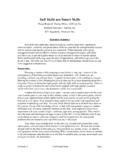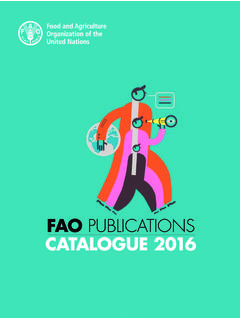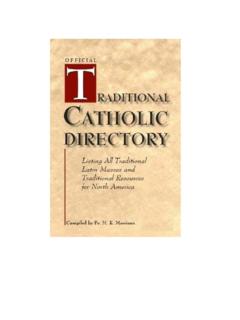Transcription of Character Analysis - Wilhelm Reich Infant Trust
1 Wilhelm Reich Character Analysis Third, enlarged edition Newly translated by VINCENT R. CARFAGNO. Edited by Mary Higgins and Chester M. Raphael, Farrar) Straus and (;innlx NEW YORK Full text available from the Wilhelm Reich Infant Trust t > d - Farrar, Stram alld (;iwlIx 1~ West ISdl Street, New York 10011 Tllis IralJsJali(J11 copyright (g Hl45, W-HJ, HJ7:2 I,v Mar) Buyd Higgins as Trustee of the Wilhelm Reich Illfall! TlIlst Flllld All rights reserved Distributed ill Canada by Douglas & ~klllt\n> Printed iu the Ullited States of Alllerica Parts Olle alld Two were origillally PlllJlislJed ill (;erIw:III as Charaktermwlyse, copyright 19:3:3, renewetl Inol by Mary Boyd Higgins as Trustee of the \Vilhelm Reich lnfallt Trust Fund Published in 1972 by Farrar, Straus awl Ciroux This Farrar, Straus and Giroux paperbat:k ediliulI, 1 UUO I .ibra,y of ( ;oHgress catalog card ulUnber: 711 16;)oh:i Paperback ISBN-13: 978-0-374-50!J8IJ--l Paperback ISBN-lO: 0-:374-50980-8 \ ( ". i5 27 29 :30 28 26 2-1.))))
2 Full text available from the Wilhelm Reich Infant Trust t bs d CONTENTS. PREFACE TO THE THIRD EDITION xi PREFACE TO THE SECOND EDITION xv PREFACE TO THE FIRST EDITION xix PART ONE: TECHNIQUE. I SOME PROBLEMS OF PSYCHOANALYTIC TECHNIQUE 3. II THE ECONOMIC VIEWPOINT IN THE THEORY OF. ANALYTIC THERAPY 10. I l I o N THE TECHNIQUE OF INTERPRETATION AND OF. RESISTANCE Analysis 21. Some typical errors in the technique of in . terpretation and their consequences 21. 2 Systematic interpretation and resistance Analysis 27. 3 Consistency in resistance Analysis 38. IV ON THE TECHNIQUE OF Character Analysis 42. Introduction 2 Character armoring and Character resistance 43. a) The inability to follow the basic rule 43. b) Where do the Character resistances come rrom? 45. c) On the technique of analyzing the Character resistance 49. d) The technique of dealing with individual situations as derived from the structure of the Character resistance 57. Full text available from the Wilhelm Reich Infant Trust t b.
3 - vi CONTENTS. e) The breaking down of the narcissistic de . fense apparatus 72. f) On the optimal conditions for the analytic reduction to the infantile situation from the contemporary situation 83. g) Character Analysis in the case of abun . dantly flowing material 86. 3 A case of passive-feminine Character 88. a) Anamnesis 88. b) The development and Analysis of the char . acter resistance go c) Linking the Analysis of the contemporary material to the infantile g8. 4 Summary 120. V INDICATIONS AND DANGERS OF Character Analysis 122. VI ON THE HANDLING OF THE TRANSFERENCE 12 7. The distillation of the genital-object lihido J27. 2 Secondary narcissism, negative transference, and insight into illness 137. 3 On the handling of the abstinence rule 139. 4 On the question of the "dissolution" of the positive transference 143. 5 A few remarks about counter-transference 145. PART TWO: THEORY OF Character . FORMATION. VII THE CHARACTEROLOGICAL RESOLUTION OF THE IN . FANTILE SEXUAL CONFLICT 153.
4 Content and form of psychic reactions 153. Full text available from the Wilhelm Reich Infant Trust t b d - CD CONTENTS vii 2 The function of Character formation 155. 3 Conditions of Character differentiation 160. VIII THE GENITAL Character AND THE NEUROTIC. Character (THE SEX-ECONOMIC FUNCTION OF THE. Character ARMOR) 169. Character and sexual stasis 169. 2 The libido-economic difference between the genital Character and the neurotic Character 176. a) Structure of the id 177. b) Structure of the superego 179. c) Structure of the ego 180. 3 Sublimation, reaction formation, and neurotic reaction basis IX CHILDHOOD PHOBIA AND Character FORMATION 194. An "aristocratic" Character 194. 2 Overcoming of childhood phobia by the formation of Character attitudes 198. X SOME CIRCUMSCRIBED Character FORMS 20 4. The hysterical Character 20 4. 2 The compulsive Character 20g 3 The phallic-narcissistic Character 21 7. XI THE MASOCHISTIC Character 225. Summary of views 227. 2 The armoring of the masochistic Character 237.
5 3 Inhibited exhibitionism and the passion for self-deprecation 250. Full text available from the Wilhelm Reich Infant Trust t en at - .. viii CONTENTS. 4 Unpleasurable perception of the increase of sexual excitation: specific basis of the masochistic Character 255. 5 Observations on the therapy of masochism 267. XII SOME OBSERVATIONS ON THE BASIC CONFLICT. BETWEEN NEED AND OUTER WORLD. PART THREE: FROM PSYCHOANALYSIS TO. ORGONE BIOPHYSICS. XIII PSYCHIC CONTACT AND VEGETATIVE CURRENT 285. Preface 285. More about the conflict between instinct and outer world 2 Some technical presuppositions 289. 3 The change of function of impulse 296. 4 The as defense function ~05. 5 The interlacing of the instinctual defenses 308. 6 Contactlessness 3 10. 7 Substitute contact 323. 8 The psychic representation of the organic 32 9. a) The idea of "bursting". b) On the idea of death 9 Pleasure. anxiety, anger, and muscular armor 337. 10 The two great leaps in evolution 35 2. XIV THE EXPRESSIVE LANGUAGE OF THE LIVING 355.
6 The function of emotion in orgone therapy 355. 2 Plasmatic expressive movement and emotional expression 358. Full text available from the Wilhelm Reich Infant Trust t b d - CONTENTS ix ~ The segmental arrangement of the armor 368. 4 The emotional expression of the orgasm reflex and sexual superimposition 390. XV THE SCHIZOPHRENIC SPLIT 399. The "devil" in the schizophrenic process 399. 2 The "forces" 414. 3 The remote schizophrenic expression in the eyes 430. 4 The breakthrough of the depersonalization and first understanding of the schizophrenic split 433. 5 The interdependence of consciousness and self-perception 442. 6 The rational function of the "devilish evil" 45 6. 7 Anorgonotic regions in the catatonic state 460. 8 The function of self-damage in schizophrenia 463. 9 Crisis and recovery 481. XVI THE EMOTIONAL PLAGUE 50 4. Index 54 1. Full text available from the Wilhelm Reich Infant Trust t b d (1'\. - \. ' ). PREFACE TO THE THIRD EDITION The second edition of this book (1945) was soon sold out, and the great demand for it could not be satisfied for more than two years.
7 OUf press was busy with publications devoted to the newer field of orgone biophysics (The Discovery of the Orgone, VoL II: The Cancer Biopathy, 1948, etc.). Furthermore, I hesi . tated to issue a new edition of Character Analysis . This book still uses psychoanalytic terminology and a psychological description of the neuroses. In the fifteen years since the publication of the first edition. I had to redesign and rewrite our picture of emo . tional disease. During this time. many important developments rook place: " Character " became a term signifying typical bio . physical behavior. The "emotions," more and more, came to mean manifestations of a tangible bio-energy, of the organismic orgone energy. Slowly, we learned to handle it practically by what is now called "medical orgone therapy." In the preface to the second edition, I pointed out that " Character Analysis " is still valid in the realm of depth psychology, where it originated and where it still belongs. We no longer practice Character Analysis as described in this book.
8 However, we still use the Character -ana . lytic method in certain situations; we still proceed from Character attitudes ro the depths of human experience. But in orgone ther . apy, we proceed bio-energetically and no longer psychologically. Why then publish a third edition of this book, in its original form? The main reason is that one cannot easily find one's way toward an understanding of orgonomy and medical orgone therapy without being well acquainted with their development from the study of human emotional pathology of twenty or twenty-five years ago. Character Analysis is still valid and helpful in psychiatry, but it is far from being sufficient to cope with the bio-energetic core of emotional functions. It is indispensable for the medical orgone therapist who, without having studied psychoanalysis, comes di- Full text available from the Wilhelm Reich Infant Trust t bz d - xii PREFACE TO THE THIRD EDITION. rectly to the orgone biophysics of the 40's. The psychiatrist who has not studied the hio-energetic functions of the emotions is apt to overlook the organism as such and to remain stuck in the psy.
9 Chology of words and associations. He will not find his way to the bio-energetic background and origin of every type of emo . tion. The orgone therapist, on the other hand, trained to see a patient first of all as a biological organism, may easily forget that, besides musullar armoring, bodily sensations, orgonotic streamings, anorgonotic attacks, diaphragmatic or pelvic blocks, etc., there is a vast field of functioning such as marital distrust, specifically distorted ideas about genital functions in puberty, certain social insecurities and anxieties, unconscious intentions, rational social fears, etc. Although the "psychic realm" of the emotions is much narrower than their "bio-energetic realm"; al . though certain diseases, such as vascular hypertension, cannot be attacked by psychological means; although language and thought association cannot possibly penetrate more deeply than to the phase of speech development, that is, about the second year of life, the psychological aspect of emotional disease remains im.
10 Portant and indispensable; however, it is no longer the foremost aspect of orgonomic biopsychiatry. The third edition of Character Analysis has been considerably enlarged. I have added "The Emotional Plague," previously pub . lished as an article in the International Journal of Sex-Economy and Orgone Research, 1945. Also, a paper on "The Expressive Language of the Living," not previously published. It deals with the realm of biophysical emotional expressions, the main realm of medical orgone therapy, Finally, an extensive case history of a paranoid schizophrenia will introduce the student of human na . ture to the new field of biopathology which was opened up only a few years ago by the discovery of the organismic orgone energy (= bio-energy). This case history will convince the reader that the organismic orgone energy is the physical reality which corre . sponds to the classical, merely psychological, concept of "psychic energy.". The old term "vegetotherapy" has been replaced by "orgone therapy:' Otherwise, the book remains unchanged in its main structure.









